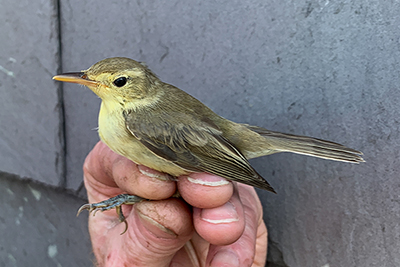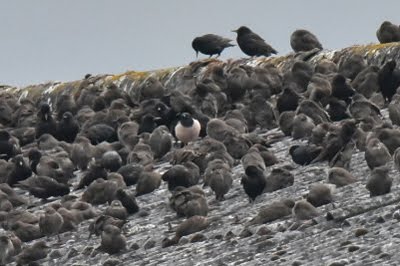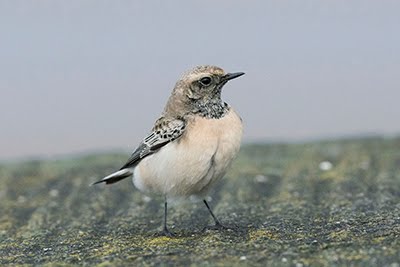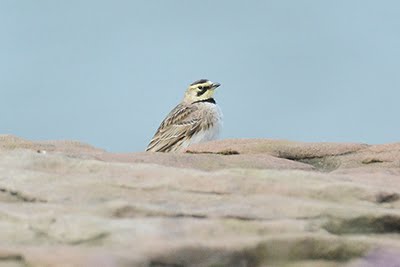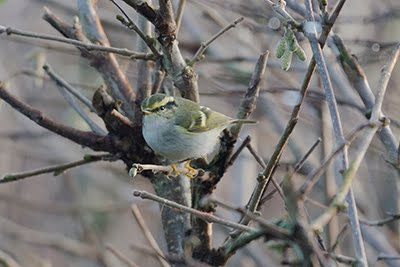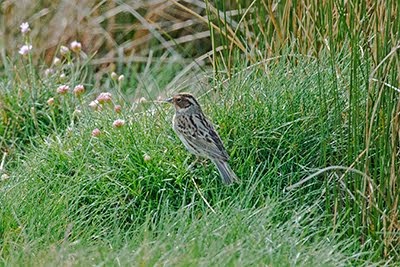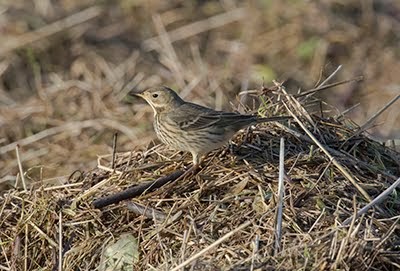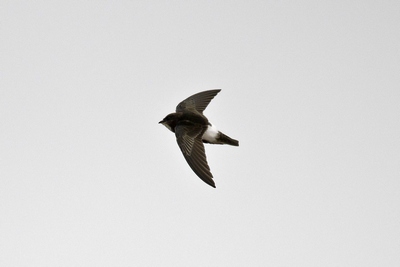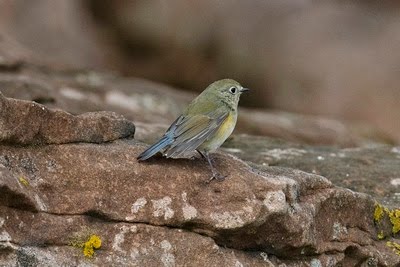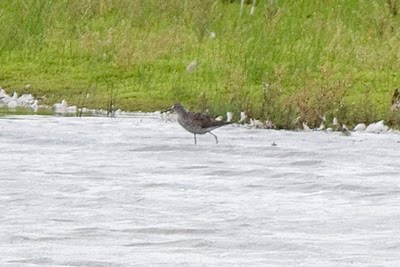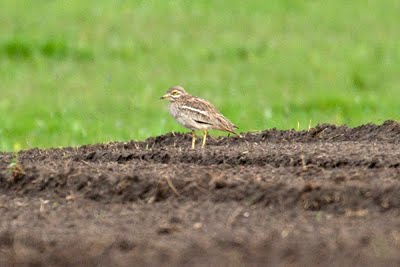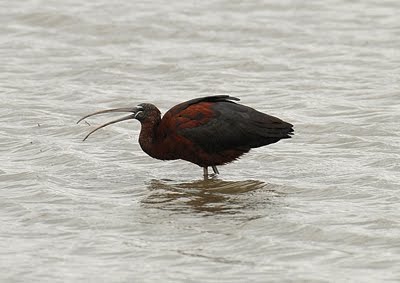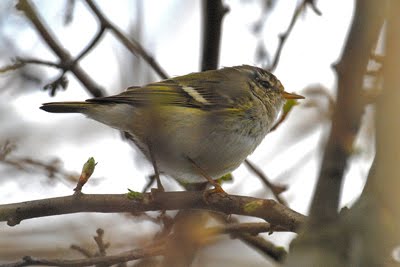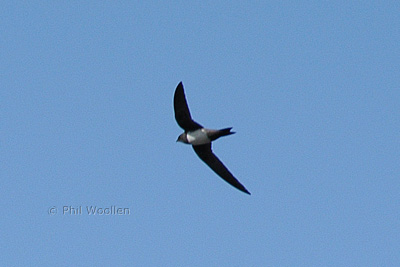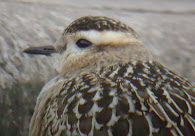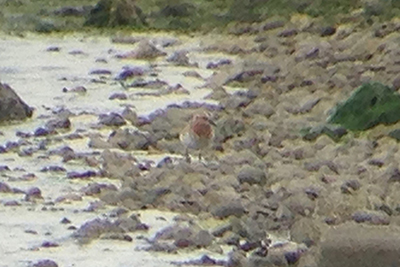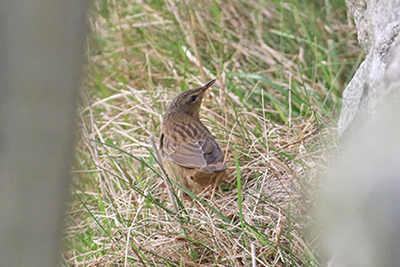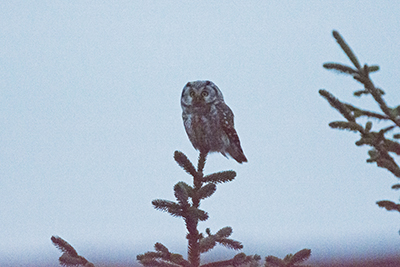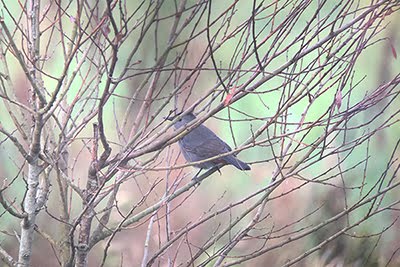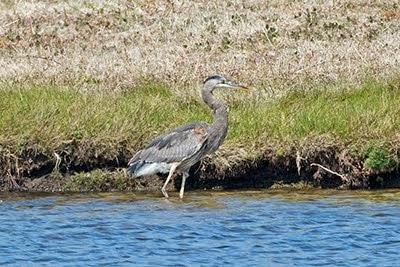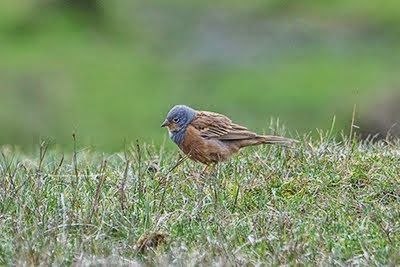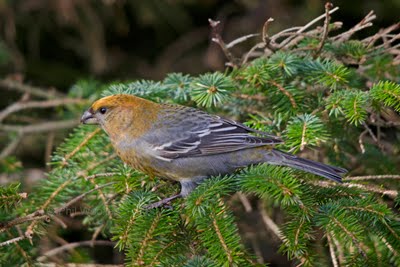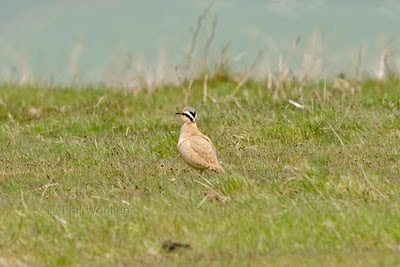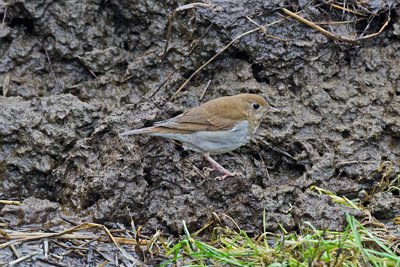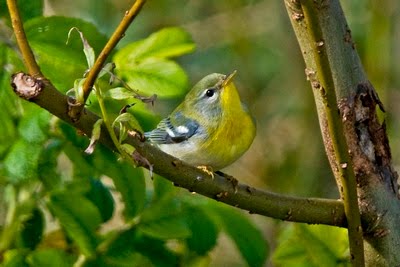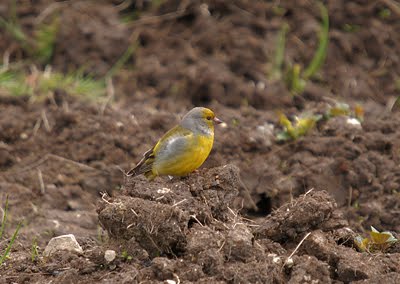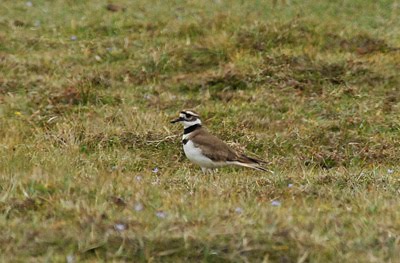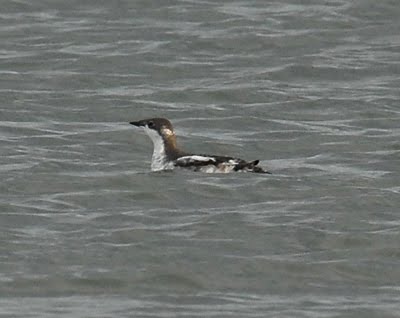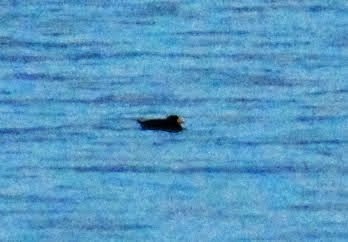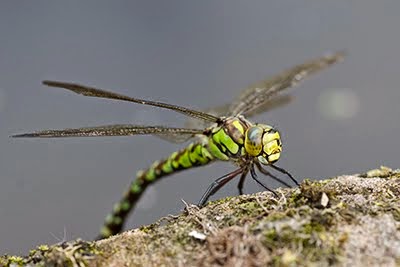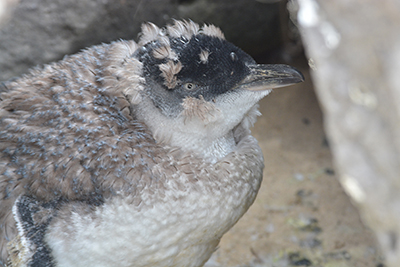After being hit hard by trichomonosis (see here) in recent years Greenfinches seem to be staging a bit of a local recovery with flocks of up to 20-30 birds in our garden during the winter. Numbers have reduced as birds start pairing up and breeding but we still have a a few knocking around and i've recently ringed several.
This male was interesting as most of the 2nd calendar year Greenfinches we catch have moulted all their greater coverts during their post juvenile moult. This one had a distinct moult contrast with two retained juvenile greater coverts - probably less than 10% of Greenfinches show this.
25 Apr 2020
15 Apr 2020
Finches and Wagtails in the garden.
We've had a few Chaffinches and Goldfinches in the garden recently and with the improved weather and drop in wind speed I've managed to set a couple of mist nets and ring a few as I suspect some of these will be migrants fattening up before moving back to the continent / Scandinavia to breed.
What really surprised me was the Linnets dropping into feed with the other finches. I'd heard them over the garden before and a few pairs breed locally every year but I'd never seen one on the ground. The first I knew they were around was when I caught one followed very quickly by another. Both were 2nd calendar year males (Euring 5) but in very different plumages. The first bird only had small tinges of pink on the breast but the other was much brighter.
Linnets can be hard to age this time of year but the central tail feathers on these birds were the giveaway. Both had very pointed central tail feathers typical of juvenile birds.
Linnet 5 male - 1st bird above & 2 nd bird below.
I did catch a few Chaffinches and these were interesting as the wing length suggested they are Scandinavian birds moving through as opposed to our local breeders.
The bird below was aged as a 2nd calendar year female as it had a single retained juvenile greater covert left over from its post juvenile moult last year. This is browner than the adult ones which are much darker wit ha broad white tip. Again, the tail was an additional clue to the age.
Another bird I was pleased to catch was a female Pied Wagtail. I don't catch many of these and this one seems to be nest building nearby. Again it was a 2nd calendar year bird (Euring 5) aged by the moult contrast in the greater coverts with two retained juvenile feathers contrasting with the newer adult type it acquired in its post juvenile moult last year.
It wasn't all about the small birds though. Wood Pigeons are a big bird to handle by yourself but I managed to extract this one and ring it. A beautiful bird close up.
Apologies for the state of my nails and fingers. They're covered in paint after taking the opportunity to touch up the paint work on my 1976 ex-army Lightweight Landrover. Actually, I ended up repainting the whole vehicle, removing the wheels and painting them as well.
What really surprised me was the Linnets dropping into feed with the other finches. I'd heard them over the garden before and a few pairs breed locally every year but I'd never seen one on the ground. The first I knew they were around was when I caught one followed very quickly by another. Both were 2nd calendar year males (Euring 5) but in very different plumages. The first bird only had small tinges of pink on the breast but the other was much brighter.
Linnets can be hard to age this time of year but the central tail feathers on these birds were the giveaway. Both had very pointed central tail feathers typical of juvenile birds.
Linnet 5 male - 1st bird above & 2 nd bird below.
I did catch a few Chaffinches and these were interesting as the wing length suggested they are Scandinavian birds moving through as opposed to our local breeders.
The bird below was aged as a 2nd calendar year female as it had a single retained juvenile greater covert left over from its post juvenile moult last year. This is browner than the adult ones which are much darker wit ha broad white tip. Again, the tail was an additional clue to the age.
Another bird I was pleased to catch was a female Pied Wagtail. I don't catch many of these and this one seems to be nest building nearby. Again it was a 2nd calendar year bird (Euring 5) aged by the moult contrast in the greater coverts with two retained juvenile feathers contrasting with the newer adult type it acquired in its post juvenile moult last year.
It wasn't all about the small birds though. Wood Pigeons are a big bird to handle by yourself but I managed to extract this one and ring it. A beautiful bird close up.
Apologies for the state of my nails and fingers. They're covered in paint after taking the opportunity to touch up the paint work on my 1976 ex-army Lightweight Landrover. Actually, I ended up repainting the whole vehicle, removing the wheels and painting them as well.
9 Apr 2020
Large Bee Fly
We've been lucky enough to have Large Bee Flies in the garden for the last two springs. I didn't know much about them until I saw them last year. Here's a bit about them:
Bombylius major (commonly named the large bee-fly or the dark-edged bee-fly) is a parasitic bee mimic fly. B. major is the most common type of fly within the Bombylius genus. The fly derives its name from its close resemblance to Bumble bees and are often mistaken for them.
Bombylius major (commonly named the large bee-fly or the dark-edged bee-fly) is a parasitic bee mimic fly. B. major is the most common type of fly within the Bombylius genus. The fly derives its name from its close resemblance to Bumble bees and are often mistaken for them.
B. major exhibits a unique flight behaviour known as "yawing" and plays a role in general pollination, without preference of flower type. The fly does not bite, sting, or spread disease. However, the fly uses this mimicry of bumblebees to its own advantage, allowing close access to host solitary bee and wasp nests in order to deposit its eggs. After hatching, the larvae find their way into the nests to parasitically feed on the grubs.
Photographing them is pretty difficult as they move so fast!
And a short video:
We've got a colony of Mining Bees in the garden so they're probably parasitising these.
4 Apr 2020
More garden ringing
With the wet and windy weather recently I haven't had a chance to do much garden ringing but with the improvement over the last week now on government imposed lockdown I'll be doing more. I have deployed the whoosh net (see details here) to try and catch some less regularly ringed garden birds that we don't normally get in a mist net!
Star birds recently have been two Mallards, A Collared Dove and a female Magpie. The Magpie was interesting as its one of a pair nest building in our neighbours garden. It was sexed as a female as it had the beginnings of a brood patch and aged as a 2nd calendar year bird on the extent of black on the 1st primary. The other half of the pair, presumably the male, is ringed on the left leg so is one of the birds I caught last year.
Collared Doves are also nice to catch as they're generally fast fliers and very agile. This one was sexed as a male but its pretty hard to distinguish.
Every year we get Mallard visiting the ditch in the back garden before it dries up in the summer and I was more than pleased to catch and ring these two! It'll be interesting to see if these are the same birds we get every year and they come back next year.
Star birds recently have been two Mallards, A Collared Dove and a female Magpie. The Magpie was interesting as its one of a pair nest building in our neighbours garden. It was sexed as a female as it had the beginnings of a brood patch and aged as a 2nd calendar year bird on the extent of black on the 1st primary. The other half of the pair, presumably the male, is ringed on the left leg so is one of the birds I caught last year.
Collared Doves are also nice to catch as they're generally fast fliers and very agile. This one was sexed as a male but its pretty hard to distinguish.
Every year we get Mallard visiting the ditch in the back garden before it dries up in the summer and I was more than pleased to catch and ring these two! It'll be interesting to see if these are the same birds we get every year and they come back next year.
Jays have also featured and I've caught three in the last couple of weeks. One was an adult female that must be nesting nearby as she had the start of a brood patch.
Subscribe to:
Posts
(
Atom
)




















